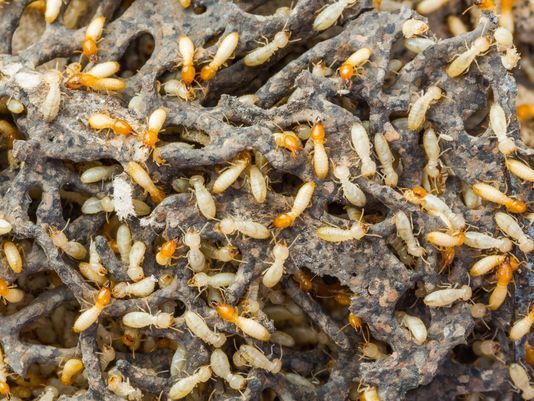The termite family Rhinotermitidae is home to the most devastating termite pests worldwide, most of which are species in the genera Reticulitermes, Heterotermes, and Coptotermes. Around 350 documented termite species belong to the family Rhinotermitidae, including most species in the US that are categorized as pests of structural wood. Reticulitermes flavipes and Coptotermes formanosus are the two most economically costly termite pests in the country, but the former is a native species that infests structures in most US states, while the latter is a non-native species that cannot tolerate conditions outside of its invasive habitat range in the southernmost states. R. flavipes is more commonly known as the “eastern subterranean termite,” and this species is abundant within and around the Boston metropolitan area.
Eastern subterranean termites (EST) are eusocial insects that live in colonies located in moist ground soil. Most colony inhabitants are workers that tunnel through the earth to seek out wood scraps and other forms of cellulose-rich foods, such as decaying plant matter, paper, and of course, structural wood in homes and buildings. Every year from April to June in Boston, reproductive swarmers known as “alates” take flight from existing colonies by emerging from holes that workers excavate in the ground. While the vast majority of alates rapidly parish, the very few that survive shed their wings and mate within a crevice in moist soil near decayed wood debris. This small crevice represents the earliest stage of nest formation where the former alates serve as queen and king of the newly established colony.
Colonies are initially slow to grow, but after a three year to five year maturation period, the queen starts laying as many as 1,000 eggs per day. After a decade of maturation, a colony may contain more than one million inhabitants that dwell in several interconnected nests. Due to their poor flying abilities and their susceptibility to desiccation, alates rarely travel distances longer than a city block before succumbing to predatory attacks or the elements. According to a recent study on EST mating swarms, the maximum distance covered by an EST alate was 501 yards. Considering the available data, homeowners should assume that wherever swarms are spotted, there also exists at least one mature colony in the vicinity. Homes located on properties that are littered with dead wood are particularly vulnerable to subterranean termite attacks. Because of this, dead trees and stumps should be removed from yards, and all wood debris should be cleared from properties.
Is dead wood in the form of bark, sticks, stumps, fallen branches, and mulch prevalent on your property?

